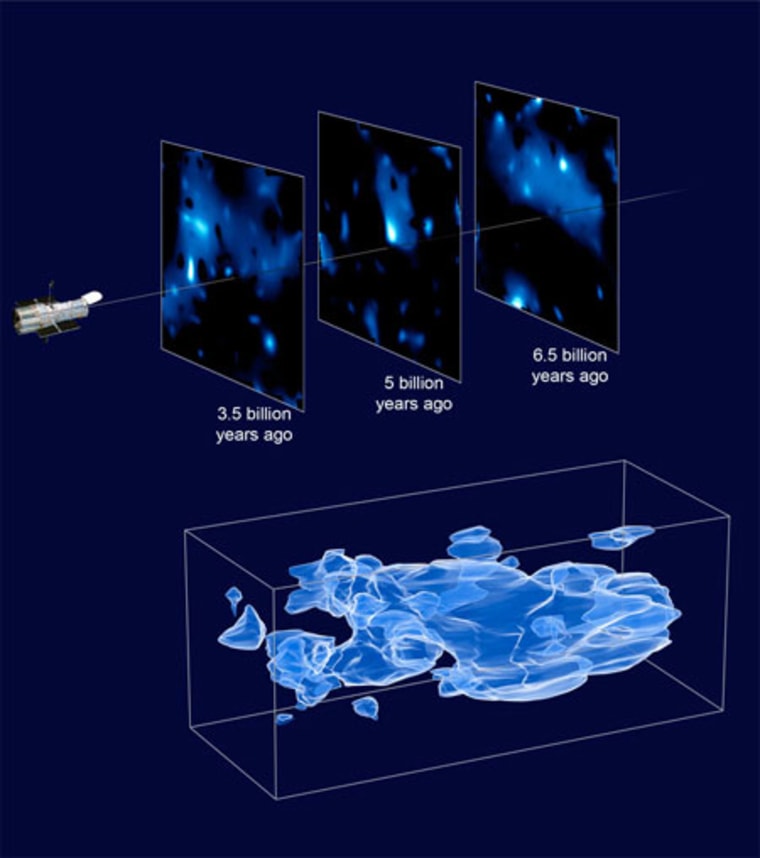Scientists think they've found a virtual way to hunt for dark matter in the lab by studying real-world materials that may behave similarly to the elusive cosmic stuff.
Dark matter is the name given to the mass that seems to make up much of the universe, but remains frustratingly difficult to detect.
Some theories suggest dark matter is actually composed of tiny particles that don't interact with light or regular matter, except through gravity. One candidate for what dark matter might be made of is a never-before-seen particle called the axion that has a small mass and no charge.
Scientists recently discovered a surprising connection between the theoretical properties of the axion and those of a newly discovered subset of materials called topological insulators. In topological insulators, which include materials that could be used in computer chips, loose electrons flow easily across the surface of the material, but not very well through the interior.
Since the same mathematics that describe topological insulators also apply to axions, researchers think that by studying these materials they may learn more about how to find dark matter.
"That both are described by the same mathematical equation is the beauty of physics," said condensed matter theorist Shoucheng Zhang of the Stanford Institute for Materials and Energy Science (SIMES). "Mathematics is so powerful — it means we can study these things in topological insulators as if they were a baby universe."
The research offers a new avenue in the hunt for dark matter, which has so far stymied scientists who have tried and failed to capture the strange stuff in sensitive underground detectors and high-powered particle accelerators.
By understanding how topological insulators work, scientists could use that know-how to understand axions. And that, researchers said, could reveal vital clues into the fundamental nature of dark matter in the universe.
"If we 'see' an axion in a tabletop experiment, it will be extremely illuminating," Zhang said. "It will help shed light on the dark matter mystery."
Zhang and colleagues Rundong Li, Jing Wang and Xiao-Liang Qi, also from SIMES, which is operated jointly by Stanford University and SLAC National Accelerator Laboratory, detailed their research in the March 7 online edition of the journal Nature Physics. Zhang also announced his findings March 15 at the American Physical Society meeting in Portland, Ore.
